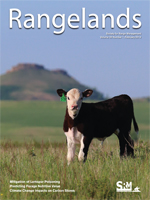On the Ground
Reducing atmospheric CO2 through enhanced terrestrial carbon storage may help slow or reverse the rate of global climate change. However, information on how climate change in the South-west might affect the balance between CO2 up-take and loss on semiarid rangelands is not easily accessible to land managers.
We summarize studies that focus on key components of carbon exchange across the warm deserts of North America to determine if common trends exist that can be used in management.
Management strategies that increase carbon sequestration or decrease carbon loss are especially important. Thus managers will need to know what management practices are likely to promote carbon storage or minimize losses during critical time periods.





